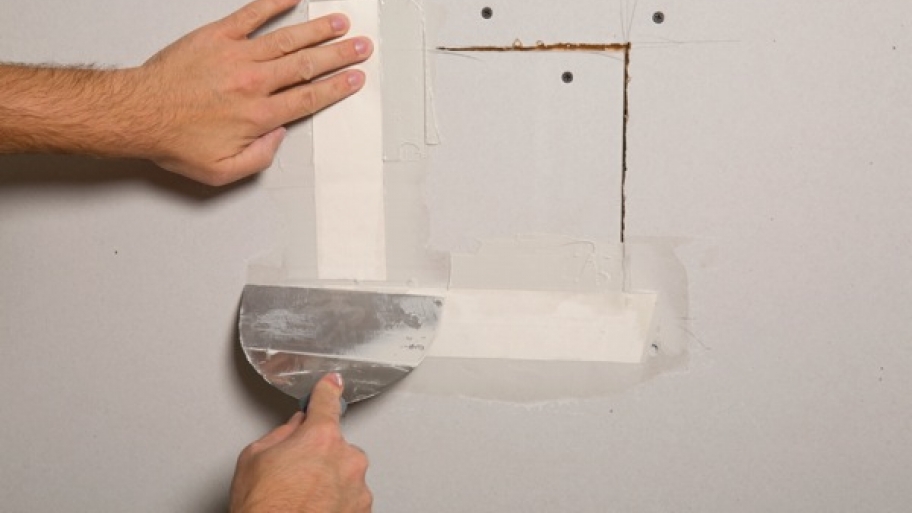We will need persistence and patience when we patch drywall. There are many things to consider when working with drywall. As an example, we will need to deal with the dust problem. Even if we are not sensitive to dust, a large amount of airborne particulates could still cause health issues. For this reason, we should use safety goggles, particle mask, long sleeve shirt and rubber gloves. First of all, we should prepare the patched area. If a drywall sheet has come loose, we may need to re-fasten it or replace it with a new one. Replacement could be necessary when the internal gypsum board has crumbled and hangs to the wall just barely. Bubbles and other visible indications may tell us that the drywall sheet will need to be replaced.

The next thing we should do is to back frame the hole, so we can attach the sheetrock when we need to fill the void. When screwing the sheetrock, we will need a wood framing. For this purpose, we may need a cordless drill to make the job much easier; especially because we will move around a lot. The replacement drywall sheet will need to be held in proper position, before we fasten the screw. Once we have fastened one side of the sheet, we can repeat the same process with the other side. We should have a strong frame; once we have finished the back framing. The whole thing can be completed relatively quickly with enough tools. Even the biggest flaws in the drywall can be fixed with this kind of method.
However, we may want to fix the small hole, instead of replacing the entire sheet. In this case, we need to measure the hole and secure it by fitting a piece of sheetrock. It isn’t necessary to be a super tight fit, but it should fit properly and we are able to screw it to the installed back framing. We should also remember that screws must be set just below the surface, but we shouldn’t do this to deep that the head of the screw tears the face of the paper. For residential usages, sheetrock is usually available in a couple of thickness, ½-inch and 5/8-inch. The smaller ½-inch sheetrock is useful for drywall in ceilings and interior walls, while the bigger 5/8-inch one is more appropriate in the garage and under the stairs.
We may coat the patch with a “mud” or specifically, the drywall compound. Before we apply the drywall tape, the area should be pre-filled. When we do this, we should take some compound and then slowly fill in the edges. The excess compound should be smoothened out and we need to allow it to dry. We can apply the drywall tape, so the compound will not crack. For bigger holes, we may need a mesh that can provide stronger foundation for the drywall compound. However, we will need to work extra harder to ensure that the compound is perfectly smooth in appearance.

